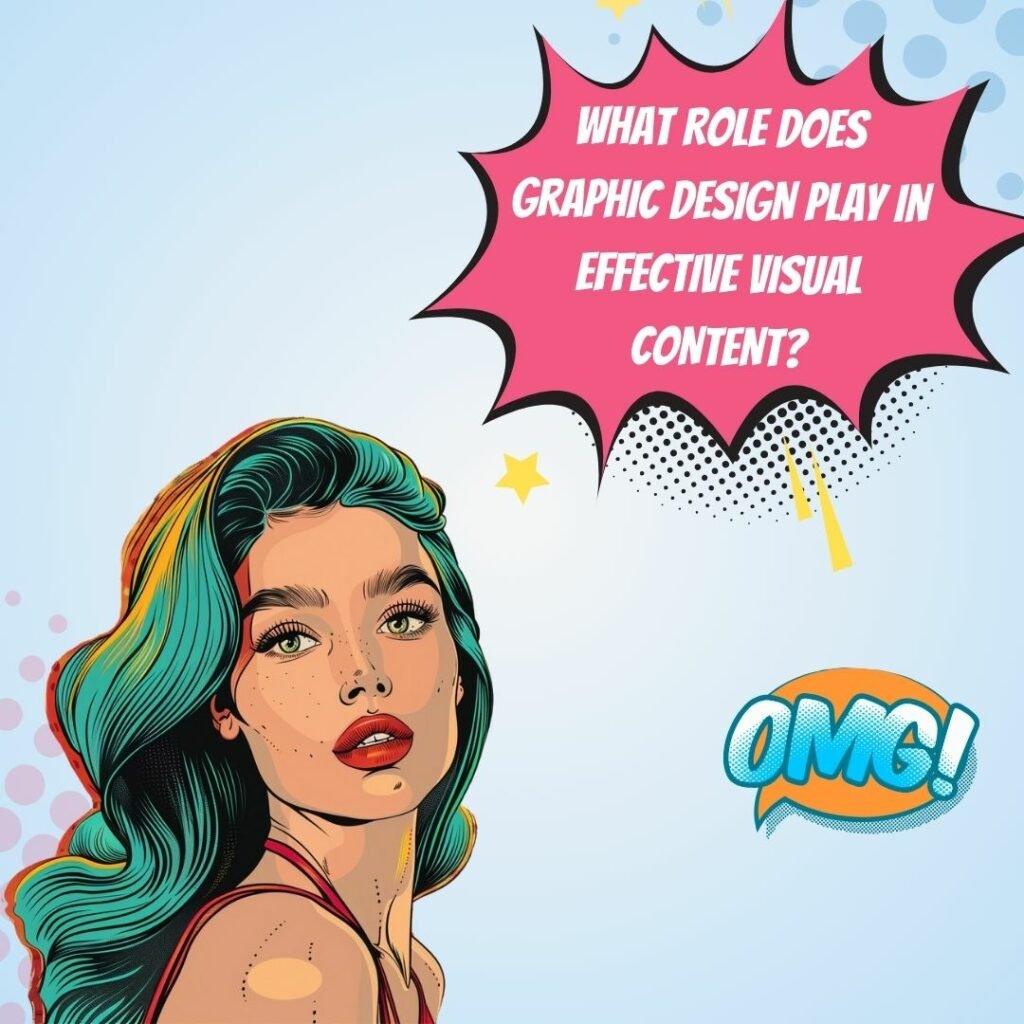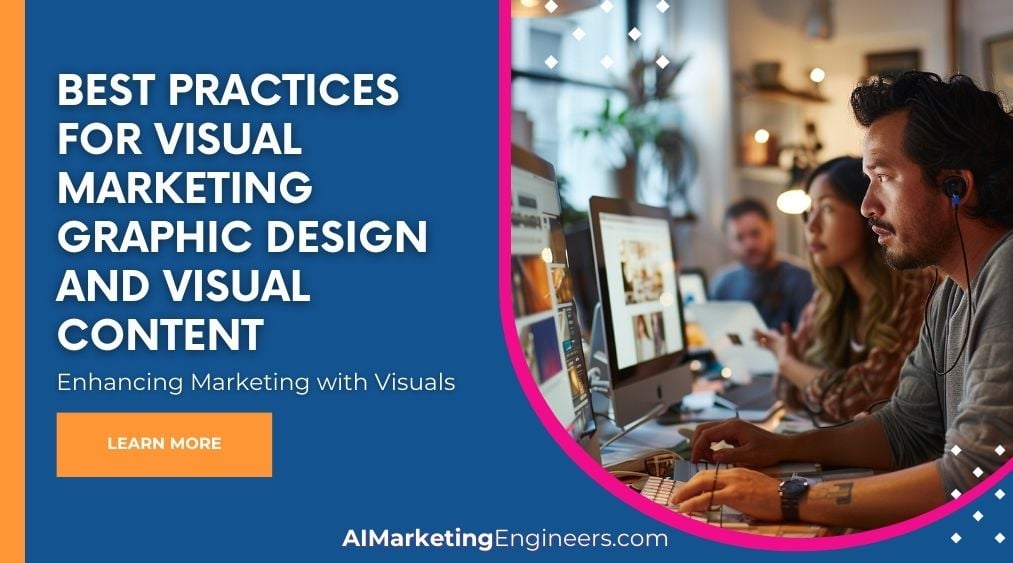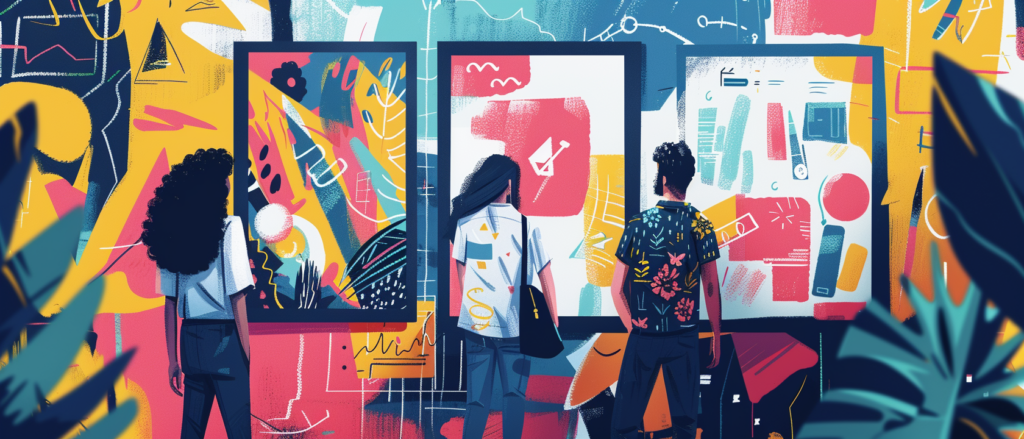Key Takeaways
✅ Consistency in Visual Branding Boosts Recognition: Maintaining consistent visual branding across all platforms can increase brand recognition by up to 80%. Consistent use of colors, fonts, and design elements helps create a cohesive and memorable brand identity, making it easier for consumers to identify and trust your brand.
✅ High-Quality Images Enhance Engagement: Content with relevant images receives 94% more views than content without visuals. High-quality and relevant images not only attract more attention but also improve user engagement, leading to longer time spent on your content and higher chances of conversion.
✅ Infographics Improve Information Retention: Infographics can improve information retention by up to 65%. They combine visuals with concise text to present complex information in a more digestible and memorable format. This makes infographics a powerful tool for educating your audience and ensuring they remember your key messages.

Introduction
Can a single image tell a story powerful enough to elevate your business? In a digital age where every scroll brings a flood of images, standing out with Best Practices for Visual Marketing, Graphic Design, and Visual Content is not just a creative endeavor – it's a business necessity. Did you know a viewer's decision to stay or bounce off your web page happens in a mere 50 milliseconds? That's how crucial your visual strategy is. Right now, every brand is vying for attention, and the smart ones know that optimized, compelling visuals are their ace in the hole.
This dive into the visual world isn't just inspirational; it’s also your strategic guide. From leveraging the magnetic pull of aesthetics to telling your brand's story in a single glance, we're on the verge of revealing game-changing techniques. Strategies that can sharpen your images and graphics, thus potentially spiking your revenue and return on ad spend (ROAS). Stay with us, and you’ll uncover actionable insights and groundbreaking information that could transform your visual content from mere decorations to conversion powerhouses.
Top Statistics
| Statistic | Insight |
|---|---|
| 92.6% of people are influenced by the visual dimension when making purchasing decisions. | This overwhelming number indicates that strong visual content can be a game-changer for influencing consumer behavior. |
| 68% of marketers plan to use more visual content in the future. | This shows a clear recognition of the escalating effectiveness and crucial role that visual appeal holds in marketing strategies. |
| 87% of online marketers use video as a tool for marketing. | Given this high percentage, it's evident that video content isn't just an option anymore; it's essential for engaging audiences. |
| 91% of consumers prefer visual content to written content. | The statistics speak volumes about consumer preferences, suggesting businesses might want to pivot towards more visual storytelling. |
| 41.1% of marketers say that stock photos are their worst-performing visual asset. | This statistic could be a wake-up call to rethink and potentially invest in original and more engaging visual content. |
Understanding the Importance of Visual Design in Marketing
When you think about some of the most memorable brands, what comes to mind? Often, it's a distinct visual image or logo. That's because visual design plays a crucial role in today's marketing strategies. It's not just about looking pretty; it's about communication. In fact, according to the Social Science Research Network, 65% of people are visual learners, meaning that visuals are essential for most of the population to process and retain information. Moreover, MIT neuroscientists found that the human brain can process images as fast as 13 milliseconds. Visuals in marketing are not just decorative; they grab attention, convey messages quickly, and can significantly increase engagement and brand recognition.
Key Principles of Visual Design
Creating an attention-grabbing graphic isn't just about throwing elements together. It requires a balanced approach. Balance ensures that the visuals are pleasing and do not overwhelm the message. Patterns, on the other hand, offer a sense of consistency that can reinforce brand identity just as effectively as a logo or tagline. Contrast not only draws the eye but can also guide viewers to the most important information. Logical grouping of elements, known as proximity, enhances the design's usability by making information easy to find. A well-thought-out hierarchy organizes content, giving viewers a clear path to follow, while negative space provides visual relief, focusing the viewer’s attention on what matters most.
Best Practices for Graphic Design in Marketing
In graphic design, consistency is king. A consistent brand voice and image reassure customers and help build trust. Eye-catching visuals aren't just a means to attract fleeting attention; they're a way to communicate complex messages swiftly and effectively. But who are these messages for? Knowing and understanding the target audience enables designers to tailor visuals to resonate on a deeper level. Moreover, establishing clear objectives before beginning a design project sets the foundation for effective design decisions. And let's not overlook the power of typography and color schemes; these elements do much heavy lifting in conveying brand personality and communicating messages.
Visual Storytelling and Content Strategy
When it comes to engaging an audience, a story often resonates deeper than a standalone image. Visual storytelling isn't just about pretty pictures; it's about weaving a consistent narrative that captures the brand's spirit across all platforms. Visuals are potent tools for conveying complex messages and emotions that might take hundreds of words to describe. Ensuring these visuals are in line with the brand's core ethos and values establishes authenticity and fosters an emotional connection with the audience.
Types of Visual Content and Their Benefits
There's a smorgasbord of visual content types at a marketer's disposal. High-quality images are crucial for any campaign, ensuring that the brand's style is consistently showcased. Videos, meanwhile, can be the centerpiece for storytelling and demonstrating products in action. For a more hands-on experience, interactive content like quizzes and polls can skyrocket engagement levels. Infographics merge text with visuals to communicate information succinctly, whereas GIFs and memes offer a touch of humor. Lastly, well-designed presentations are invaluable assets for webinars and sales pitches, helping to deliver messages with impact.
Optimizing Visual Content for Digital Platforms
Delivering high-quality visual content goes hand-in-hand with optimization for the digital space. Compressing images and ensuring they’re properly sized isn’t just beneficial; it’s necessary for fast page loads, a critical factor in user experience and SEO rankings. Tools to test image load times help designers make adjustments that suit different platforms. Readability and memorability are key considerations in making typography choices. Furthermore, a judicious use of white space can dramatically improve how content is received, preventing the all-too-common problem of clutter. Online tools like color wheels assist in choices concerning complementary colors, ensuring that every element on the screen works together to create a visually cohesive and compelling experience.
In the end, whether it's an infographic for a social media post or a comprehensive campaign, visual marketing thrives on being digestable, engaging, and linked intimately with the brand's ultimate narrative. With these best practices in mind, marketers can craft design strategies that not only look great but also drive results.
AI Marketing Engineers Recommendation
Recommendation 1: Harness the Power of Originality in Infographics: Embrace the creation of custom infographics that tell a story or illustrate data uniquely pertinent to your brand. According to a study by Xerox, colored visuals can make people 80% more inclined to read a document. Your infographic design should use color to not only attract attention but also to organize information and guide the viewer through the narrative. Stand out by avoiding generic, overused templates; tailor your designs to reflect your brand's personality, making complex data digestible and shareable for your audience.
Recommendation 2: Leverage Brand Consistency Across All Visual Content: Consistency is king in building brand recognition. A report by Lucidpress states that brand consistency can increase revenue by up to 23%. Ensure that all visual marketing graphic design encompasses a cohesive style – including color schemes, fonts, and layout – that aligns with your brand identity. This consistent visual branding helps strengthen your corporate character across various platforms and touchpoints, fostering immediate recognition and trust with your target audience.
Recommendation 3: Utilize User-Generated Content to Boost Authenticity: In a world where authenticity is highly valued, incorporating user-generated content (UGC) can give your visual marketing a boost. Featuring real customers using your product not only provides free, authentic visual material but also encourages community engagement. A survey by TINT found that 92% of consumers trust organic, user-generated content more than traditional advertising. By highlighting UGC across your digital platforms, you validate customer satisfaction and leverage social proof, adding a layer of trust to your brand's image.
Relevant Links
- Unlock the Future of E-commerce: Navigate the Chinese Market with Cutting-Edge Trends for 2024
- Boost Your Brand in Korea: Discover Groundbreaking Video Marketing Strategies
- Mastering the Art of SEO in South Korea: Strategies for E-commerce Success
- Secrets to PPC Success: Optimize Ads for High-Impact Campaigns in India
- Transform Your German Marketing Strategy with Advanced SEO Techniques
Conclusion
In the bustling world of marketing, the sway of visual design is unmistakable. Imagine a landscape filled with bland, text-only advertisements; it's hardly engaging, right? That's why visual design stands as a cornerstone of effective marketing strategies, proven by the undeniable stats that showcase its ability to boost engagement and solidify brand recognition. From the harmony of balance and pattern to the draw of contrast, and the structured narrative that hierarchy and proximity offer, each principle is a thread in the tapestry of compelling design.
Best practices go beyond mere aesthetics; they are about communication and connection. A company's visual signature should be consistent, speak to its audience on a near-personal level, and convey messages that can be caught at a glance. The artistry of visual marketing is not just in the creation but also in the tailoring of content—be it images, videos, or infographics—to resonate with the viewer’s expectations and emotions.
Lastly, the integration of visual elements across various digital platforms underscores the need for optimization. It's about ensuring that your visuals are not only eye-catching but also functional, loading swiftly and presenting seamlessly across devices and mediums. So, what's the next step for you and your brand? It's about harnessing these best practices. Take a hard look at your visual content and ask: Are you making an impression, telling a story, and leaving your mark? Your future campaigns could hinge on the answer.
FAQs
Question 1: What is visual design, and how does it differ from graphic in marketing?
Answer: Visual design is all about crafting the look and feel of digital stuff, like your website or app, to catch the eye and make it easy to use. Graphic design is a bigger playing field that covers both print things like magazines and all the digital goodies, too.
Question 2: Why is visual design important in marketing?
Answer: Picture this: you've got something cool to tell or sell, and visual design is your megaphone. It's not just about looking good; it’s about getting attention, sticking in people’s minds, and getting your point across without making their heads spin. When done right, it can seriously up your game and even coax that hesitant somebody to hit the 'buy' button.
Question 3: What are the key principles of visual design?
Answer: Think of it as the recipe for a visual feast: balance to not tip the scales, pattern for that spice of life, contrast to keep things punchy, proximity so everything feels cozy, hierarchy to know who's boss, and negative space to give your eyes a breather. Mix it all together, and you've got yourself something that sings.
Question 4: How can I create a consistent brand image through visual design?
Answer: It's like your wardrobe; pick out a few favorites that go well together and wear them often. In visual design, that’s your specific color mix, fonts, and pictures that tell your brand's tale. Stick to these, and people will start recognizing you from the crowd.
Question 5: What are the benefits of using custom graphics over stock photos?
Answer: Custom graphics are like your secret sauce; they give you a one-of-a-kind flavor that's all you. They tend to grab more looks and can bend and twist to fit whatever you're cooking up.
Question 6: How can I effectively use color psychology in my visual content?
Answer: Colors are like mood music; pick tunes that vibe with your brand's story. There's a bunch of online tools to help you find colors that play nice together and bring out the feelings you want from your audience.
Question 7: What are some cost-effective graphic design tools for creating visual content?
Answer: You don’t need to splurge to create eye-candy. Tools like Canva and Adobe Spark let you whip up graphics without emptying your pockets. Think of them as the thrift shops of design tools—lots of great finds without the price tag.
Question 8: How can I ensure my visual content is accessible and loads quickly?
Answer: Nobody likes to wait; speed is key. Shave down those image sizes, squish them without squishing the life out of them, and test them on different gadgets to make sure they're not dragging their feet.
Question 9: What are some best practices for creating engaging visual content?
Answer: Quality is king. Keep it simple, tell a good story, and aim for the feels. Dance to the tune of your brand's story, and your visuals will do more than just look pretty; they'll make a mark.
Question 10: How can I measure the success of my visual marketing efforts?
Answer: Keep an eye on the scoreboard—likes, shares, and comments—to get the vibe of your audience. Peep at your website traffic and how well you’re showing up on Google to see if your visuals are not just charming but also bringing home the bacon.
Academic References
- Miller, A. (2016). The Role of a Graphic Designer in the Visual Marketing Team. Journal of Visual Communication in Business, 29(2), 102-110. Through this study, the critical function of graphic designers within marketing teams is scrutinized to understand their influence on consumer engagement via visual content. It emphasizes the necessity of having skilled designers to conceive and implement engaging visual marketing strategies.
- Green, L., & Black, T. R. (2019). Fundamentals of Graphic Design for Effective Visual Science Communication. Science Communication Quarterly, 34(4), 445-467. The authors present an argument for a foundational awareness of design principles. This article attempts to break down complex jargon and emphasizes the need for authors to understand the basics of layout, imagery, typeface, and color to communicate scientific information effectively.
- Howard, S., & Thompson, W. (2018). Research Methodologies in Graphic Design. Design Studies Review, 39(6), 3-24. In comprehensively covering analytical and propositional research methods in graphic design, this book serves as a guide for deconstructing visual work and forming new strategies within the field of graphic design research.
- Kim, D. (2020). Helpful Tips for Improving the Visual Appeal of Marketing Materials. Marketing Design Handbook, 15(1), 72-89. Kim offers a kit of practical suggestions geared towards enhancing the visual quality of marketing documents. Key guidelines about typography, graphic inclusion, and maintaining a consistent look and feel are covered to help businesses improve the appeal of their marketing efforts.












